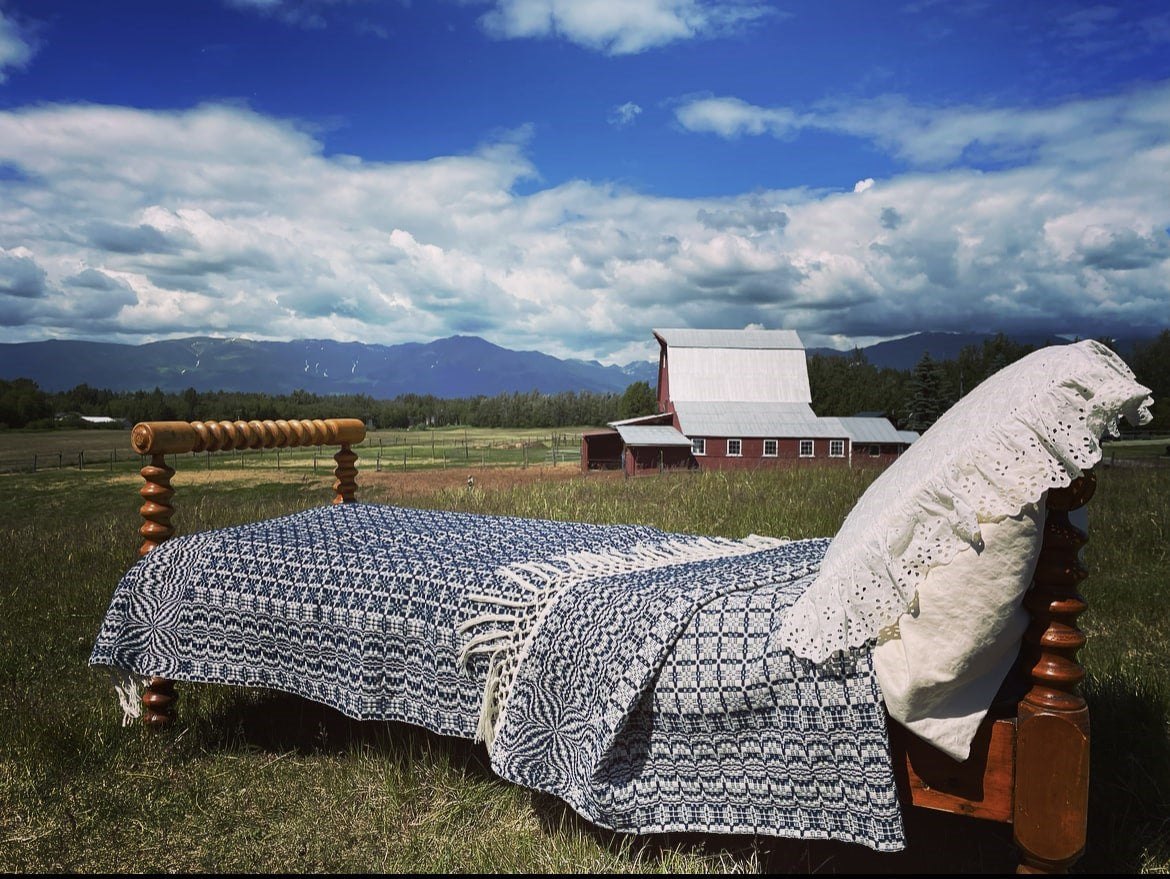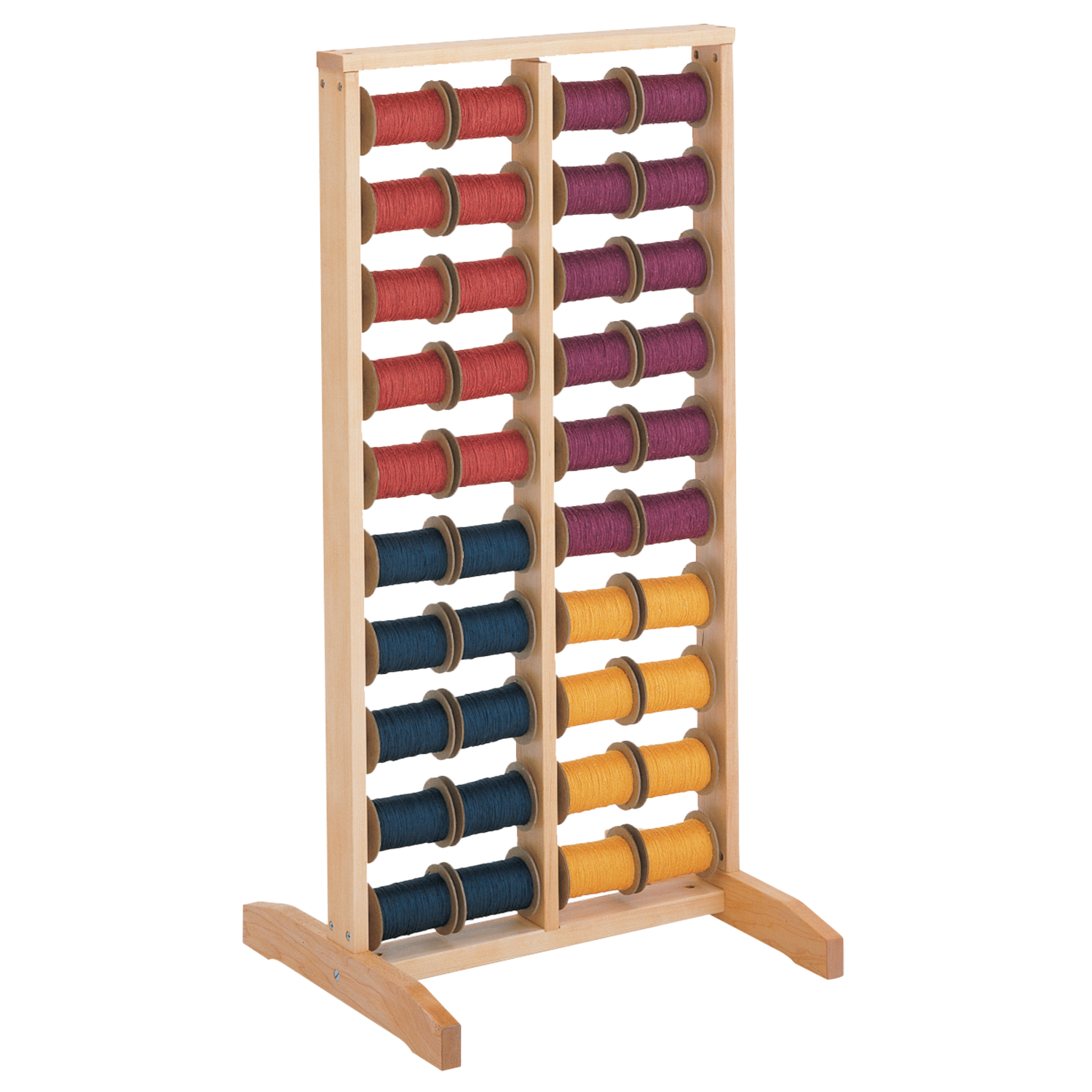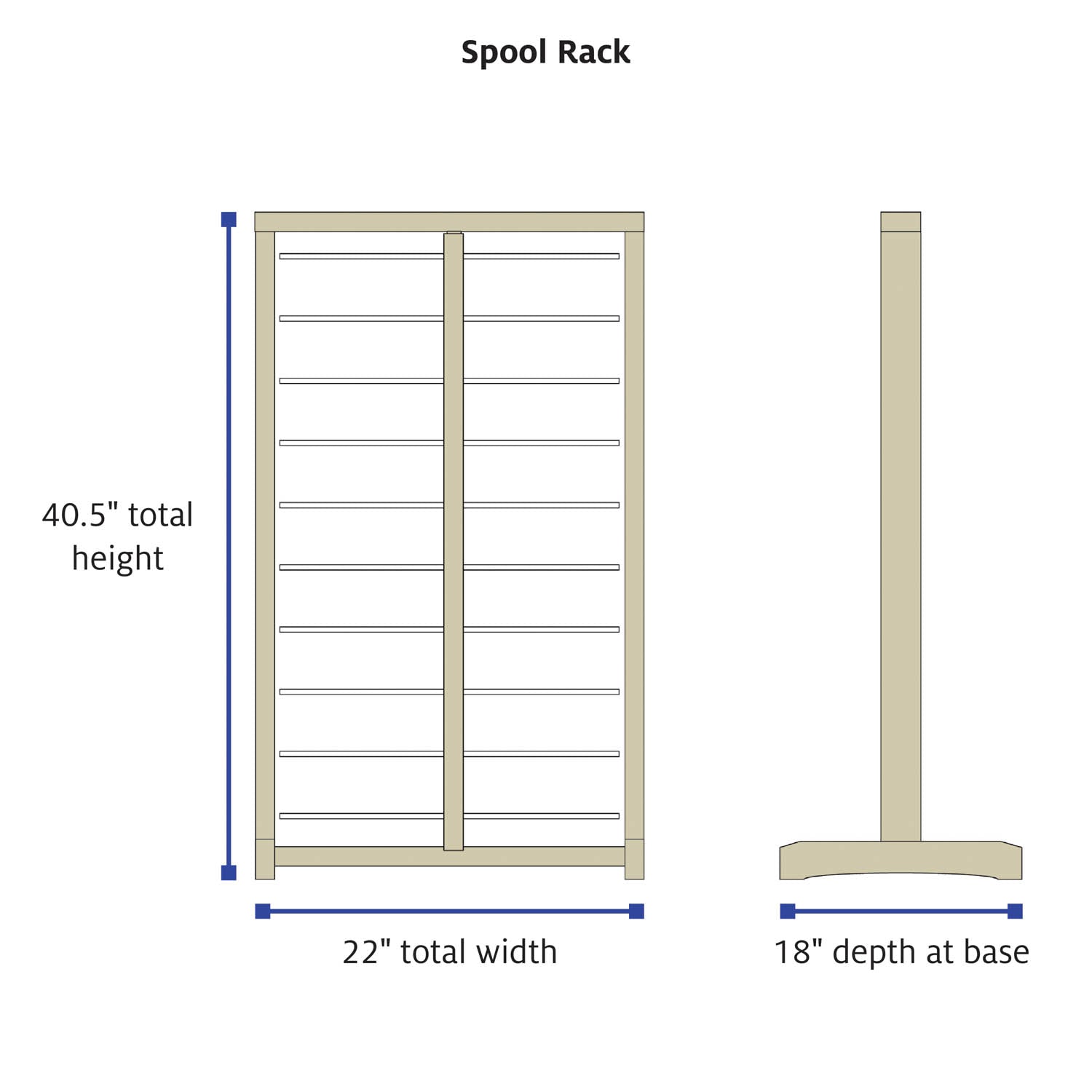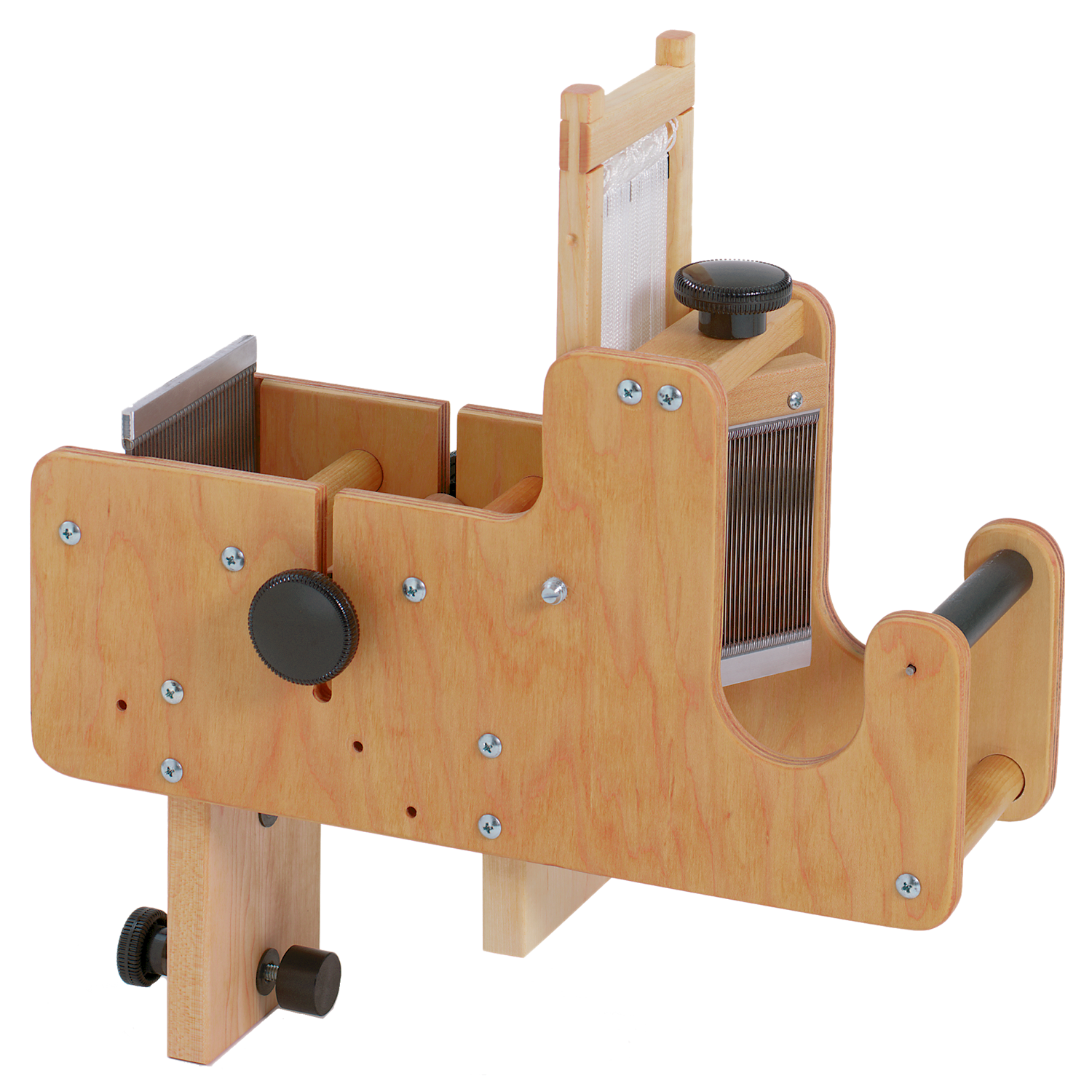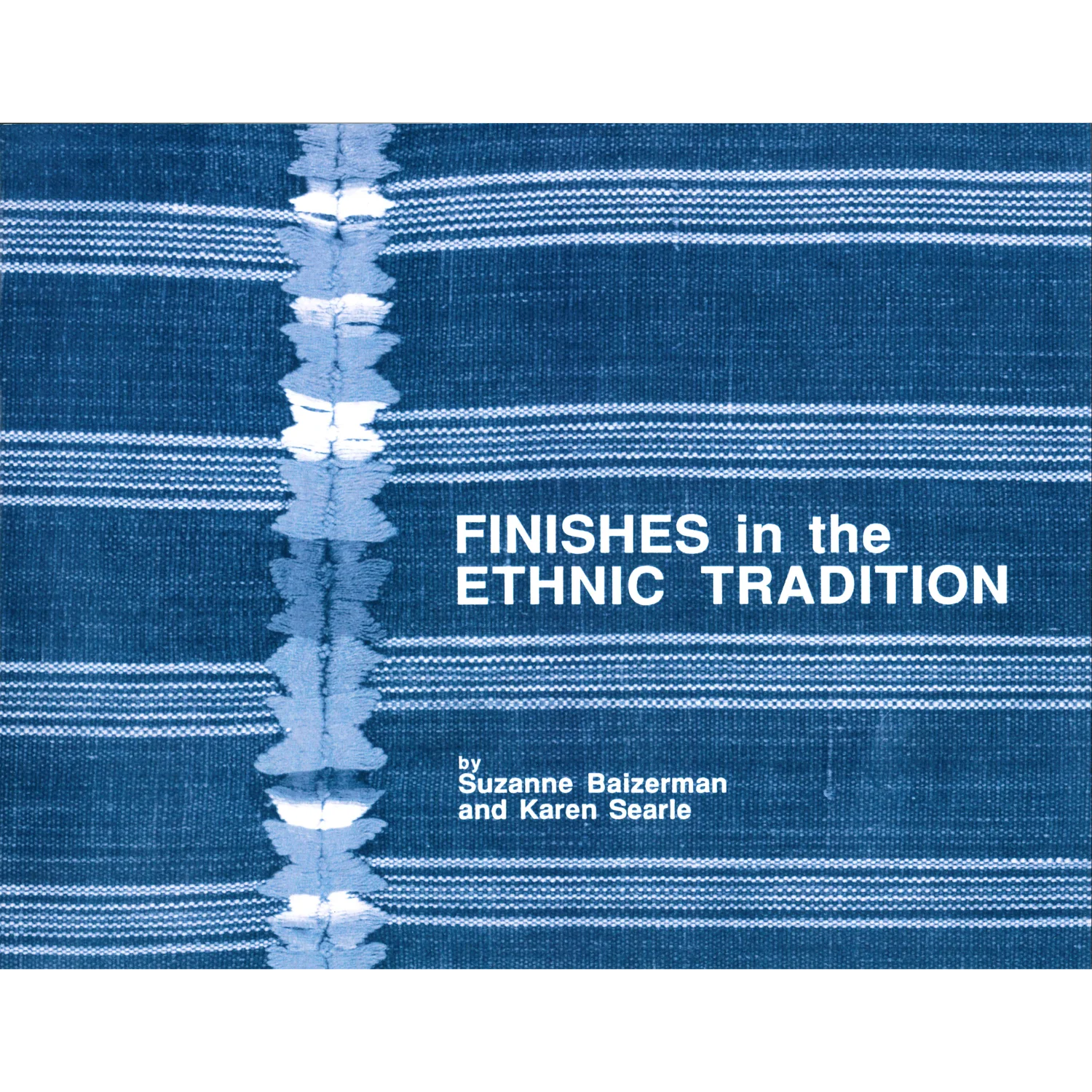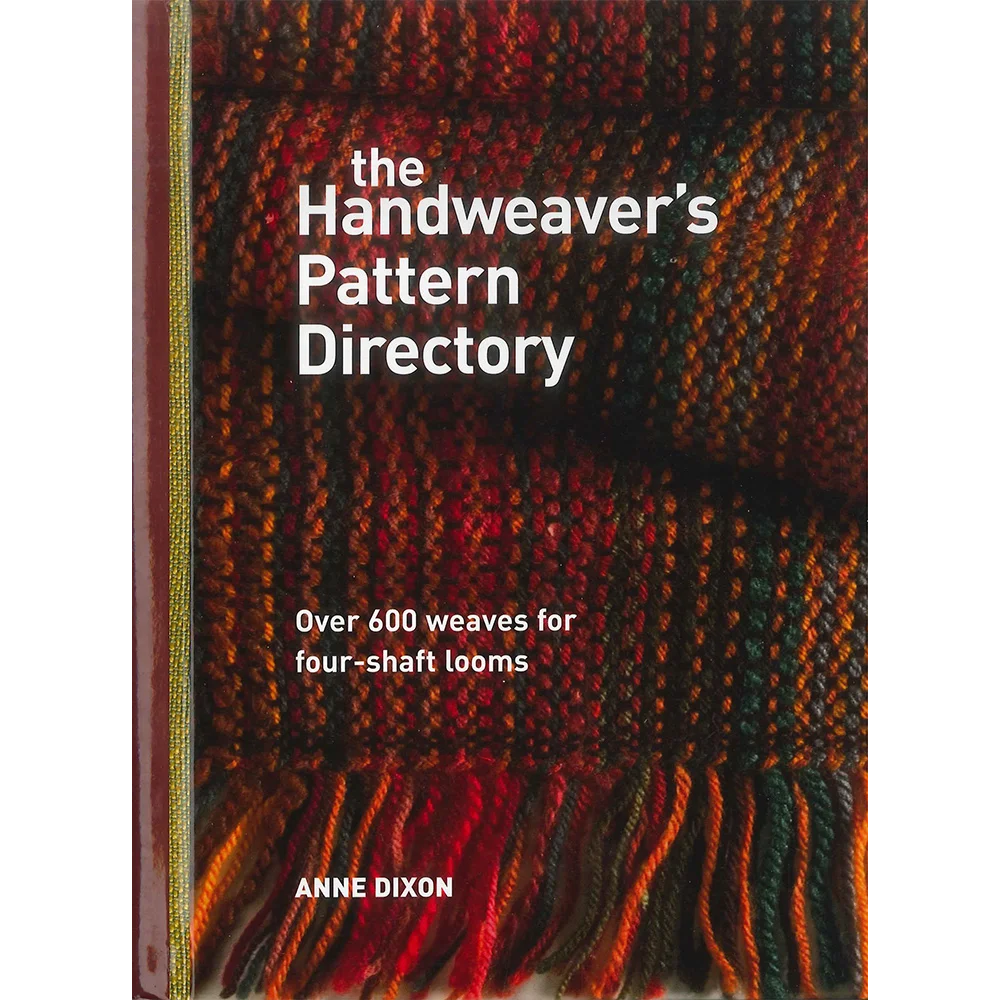Lee's Surrender Coverlet
Designed and woven by Karen Ruckle Gardner
As a young child visiting my great aunt in the nursing home, I would love to sneak to the lower floor and watch as residents wove blankets on large floor looms. I dreamt of weaving my own blanket. When I married and moved to Charlottesville, Virginia, over 30 years ago, I walked by a shop selling Schacht looms and offering classes. I went home with a table loom that day—a far cry from those big looms in the nursing home, but just as exciting. Money was tight, so I got an old spinning wheel and ordered raw fleeces to make my own yarn. When we moved to a small colony farm in Palmer, Alaska, in 1989, I knew right away I would get the perfect sheep to grow the best wool for my projects. Many more looms and sheep followed. Superfine merino sheep originally from Morehouse Farm in New York entered the picture in 1990 and our flock continued to grow and produce amazing wool. I was unable to keep up with the spinning and started sending our wool to Blackberry Ridge Woolen Mill, who do a great job spinning yarn. I use this yarn to make woolen goods for purchase, including blankets, shawls, scarves, and felted yardage.

When the original creamery of the farm became available, we thought it was a great opportunity to open a small weaving shop. Among the offerings are pre-warped merino wool projects, group scarf classes for those with little to no experience, private beginning warping classes, workshops, and studio time. Supplies are also available: yarn, finished products, looms, and all the other tools and equipment needed for weaving. We teach our group classes on Wolf Pup, Baby Wolf, and Mighty Wolf looms. It is convenient that we can move the looms as needed.
I have always dreamed of weaving a coverlet with my merino wool. I have a copy of Of Coverlets and have envisaged weaving every last one of them. I had eyed the Cranbrook for years and schemed a plan of how to acquire just one more loom. The shop had a great space that called its name. I wanted to weave on this beautiful loom, as well as have it available for others who share the same dream.
We purchased the 60" 8-shaft Cranbrook with 12 treadles, the sliding threading bench, the sectional warping beam, tension box, and spool rack. The instructions were amazing, and it was easy to set up. The tension box was essential during the beaming process. We only had one Schacht spool rack which only controlled 20 of our 40 cotton bobbins. We improvised "racks" for the remaining 20 bobbins, which we do not recommend. The threading bench is another accessory that helped us to complete the warping of this large project (getting a friend to sit there is also recommended). With the ease of the tension box, it made sense to warp a 30-yard warp. In this way, the warped loom would be available for commissions and studio hours for those weavers who wish to weave their own coverlet.
One thing I did not realize when I bought the Cranbrook was that the treadles can lock into place to keep the shed open. This is especially helpful when weaving a wide project, as you don’t need to keep your foot on the treadle when you "catch" the shuttle at the other side. (If I had known this, I would have bought the 72"). I tied my tabby threads to treadles 3 and 4, skipped two treadles, and tied my pattern threads to treadles 7, 8, 9, and 10. It was easy to get in a great rhythm and "dance" through the pattern. Good music kept up my beat. The weighted hanging beater option made it relaxing and gave me a dense consistent beat with minimal effort.
I chose Lee’s Surrender as my first project because it is the pattern shown on the "Of Coverlets" introductory page and I found it to be such an inspiration. I continue to dream of bringing the whole book to life through weaving the patterns one by one—even if I have to finish in the nursing home.
Download Lee's Surrender weaving draft
(This pdf is for personal use only. Please do not distribute or sell.)
Project Specs
This overshot is a two-shuttle weave. Use 8/2 cotton for the tabby and Yule Farm 2-ply merino wool for the pattern weft.
Finished size: 54" wide and 82" long with 8" knotted fringe (60" x 86" on loom)
Weave structure: overshot
Number of warp ends: 1202 (includes floating selvedges)
Warp length: 126" (includes take-up and loom waste)
Width in reed: 60"
EPI: 20, sleying 2 ends per dent in a 10-dent reed
PPI: 40
What You'll Need
- Warp: 8/2 unmercerized cotton, unbleached—4,210 yd per blanket (includes 42" loom waste/fringe)
- Tabby weft: 8/2 unmercerized cotton, unbleached—3160 yards
- Pattern weft: Yule Farm 100% superfine merino wool, 2-ply fingering yarn in natural dark gray over-dyed with Greener Shades River Blue—3160 yards
-
4-shaft loom, at least 60” weaving width
-
weaving temple
-
two shuttles
Materials
Equipment
Directions
Weaving
Thread following Lee’s Surrender draft in A Handweaver's Pattern Book, page 184. Repeat center block 30 times. Tie up according to draft. Note: the drafts in this book are written for a sinking shed loom. For a rising shed loom, tie up the blank boxes, not the boxes marked with X.
Allow 12" for knotted fringe (use tie-on to decrease loom waste).
Weave 6 picks of plain weave with 8/2 cotton.
Use two shuttles to weave overshot pattern following the pattern treadling. Repeat the center block 52 times.
Alternate a row of pattern weft with a row a tabby throughout the body of the coverlet.
End with 6 picks of tabby.
Finishing
To remove the fabric from the loom, cut groups of 20 warp threads at least 12" long and tie an overhand knot close to edge. I find it easier to do a few groups on one side, then the other, working my way towards the center. (See "Assembly" to continue the fringe pattern.) Remove the fabric from the front apron rod, untying the warp bundles to use for fringe.
Merino wool felts easily with hot water and agitation, so I steamed my fabric to finish. However, I did test-wash a small swatch and found that soaking the fabric in cold water with Eucalan, then laying it flat to dry, worked well. Next time, I may try washing the whole fabric!
Assembly
You already tied groups of 20 warp threads on both ends of the coverlet when you removed it from the loom.
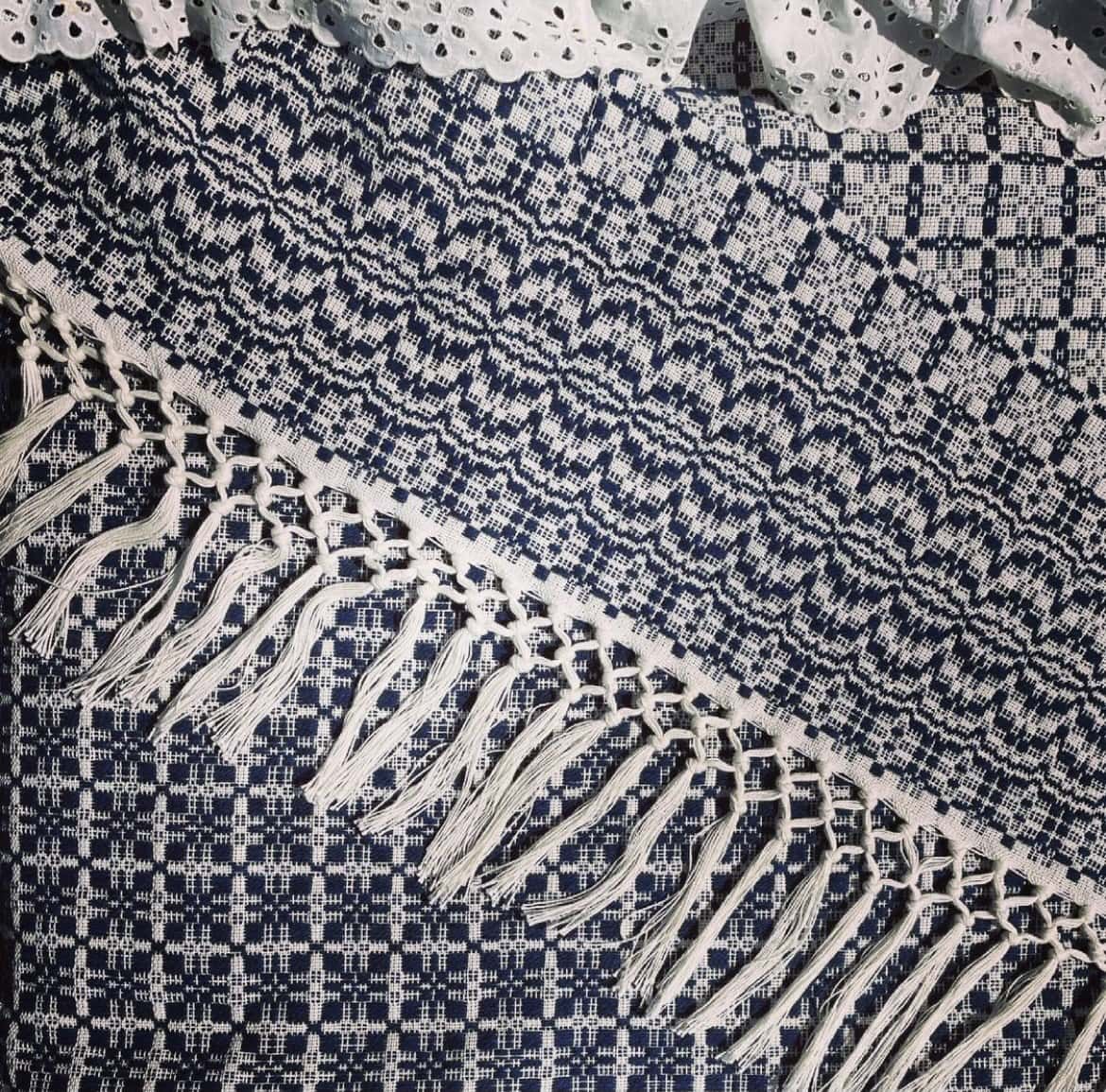
For the second row of knots, divide each of these groups into two groups of 10. Skip the first group of 10. Combine the second and third groups of 10, tying them together in an overhand knot. Repeat across the weaving until you come to the last group of 10, which is left untied on this row.
For the final row of knots, divide each group of 20 into two groups of 10. Combine the first group of 10 (skipped on the previous row) and the second group of 10, tying them together in an overhand knot. Repeat with the third and fourth groups of 10, working across the weaving. There are no groups of 10 untied on this row.
Notes
Resources
Baizerman, Suzanne, and Karen Searle. Finishes in the Ethnic Tradition. Dos Tejedoras, 1989.
Davison, Marguerite Porter. A Handweaver's Pattern Book. Churchill & Dunn Ltd, 1985.
Wilson, Sadye Tune. Of Coverlets: The Legacies, the Weavers. Tunstede, 1983.

